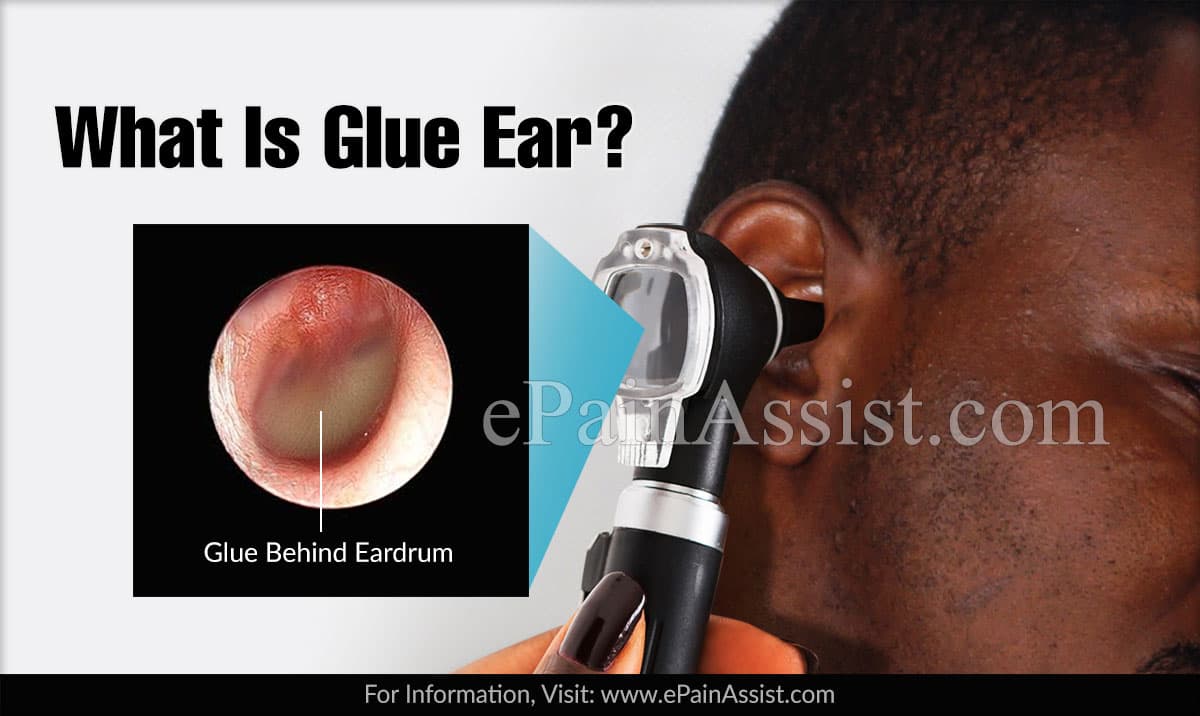What Is Glue Ear?
Glue ear is a condition in which the middle ear fills with glue-like fluid and causes dulled hearing. It can affect one or both ears. It is also known as adhesive otitis or otitis media with effusion (OME). Over a period of time the glue ear can lead to a middle ear infection which can also make hearing difficult. The fluid in glue ear has a deadening effect on the vibrations of the eardrum and ossicles created by the sound.  Glue ear is common in children but can occur at any age.
Glue ear is common in children but can occur at any age.
What Causes Glue Ear?
Glue ear occurs when thick fluid builds up in the inner ear. It can be due to the Eustachian tube not working properly. If the tube is narrow, blocked or not working properly, the balance of fluid and air in the middle ear gets altered. The air in the middle ear passes into the nearby cells if not replaced by the air coming from the Eustachian tube. This creates a vacuum and causes fluid to seep into the middle ear from nearby cells. It is common in children as the tube is narrower than in adults and more prone to get clogged. Glue ear can also occur due to severe allergies that develop inside the middle ear as the Eustachian tubes in such cases become swollen and constricted, leading to fluid build-up. The risk factors associated with Glue Ear are:
- Age below 2 years
- Seasonal allergies
- Tobacco smoke
- Bottle feed
- Day care settings
- Poor air quality
Symptoms Of Glue Ear
A person suffering from glue ear faces hearing difficulty. It is mostly seen such cases do not have any other discomfort. Following symptoms are noticed in the patient with a glue ear:
- Talk louder than normal
- Ask others to repeat themselves
- Cannot hear noises from faraway places
- Complaints of ringing and buzzing in the era
- Has difficulty in hearing if others are speaking in a normal volume
The pressure is felt deep inside the ear. Pain is a rare symptom of glue ear. There may be pain from time to time. Only a few are found suffering from this symptom. Young children suffering from glue ear are at risk of delayed speech and language (1, 2). Children with glue ear may not be able to learn well in the school as they are not able to hear the teacher well. They may feel left out of various activities and might become quiet and withdrawn. It may affect the overall development and behaviour of the child.
How Can Glue Ear Be Treated?
In most people, the glue ear goes away on its own. The diagnosis is done by getting the ear examined at the doctor’s office. If the glue ear keeps recurring the patient might require a hearing specialist. If the glue ear turns into infection antibiotics are required to treat it.
Auto Inflation
Auto inflation is a way to alleviate the fluid build-up at home. It is done up blowing the balloon-like device from each nostril. It can be done several times a day. Auto inflation is not recommended for children below 3 years of age.
Speech Therapy And Hearing Aids
In chronic and severe cases the treatment is done by an ENT (eyes, nose, and throat) doctor. The doctor advises temporary hearing aids to improve auditor skills. Speech therapy is recommended for the child where the lack of hearing has impacted the developmental milestones.
Surgery
Chronic glue ear needs to be corrected by performing surgery. The surgery done to correct it is known as adenoidectomy, in which the doctor removes the adenoid glands present behind the nose that may be the cause of fluid build-up. Adenoid glands are connected to the base of Eustachian tubes. On becoming inflamed they get irritated and inflamed and so does the Eustachian tube leading to fluid build-up. After the surgery, the patients have to wear small tubes behind the ear known as grommets which keep the eardrum open allowing the fluid to drain away from behind the ear. These are temporary and fall out themselves within a year. Glue ear tends to resolve on its own, but if you find it lasts longer than three months along with hearing difficulty and signs of ear infection, consult a doctor.
